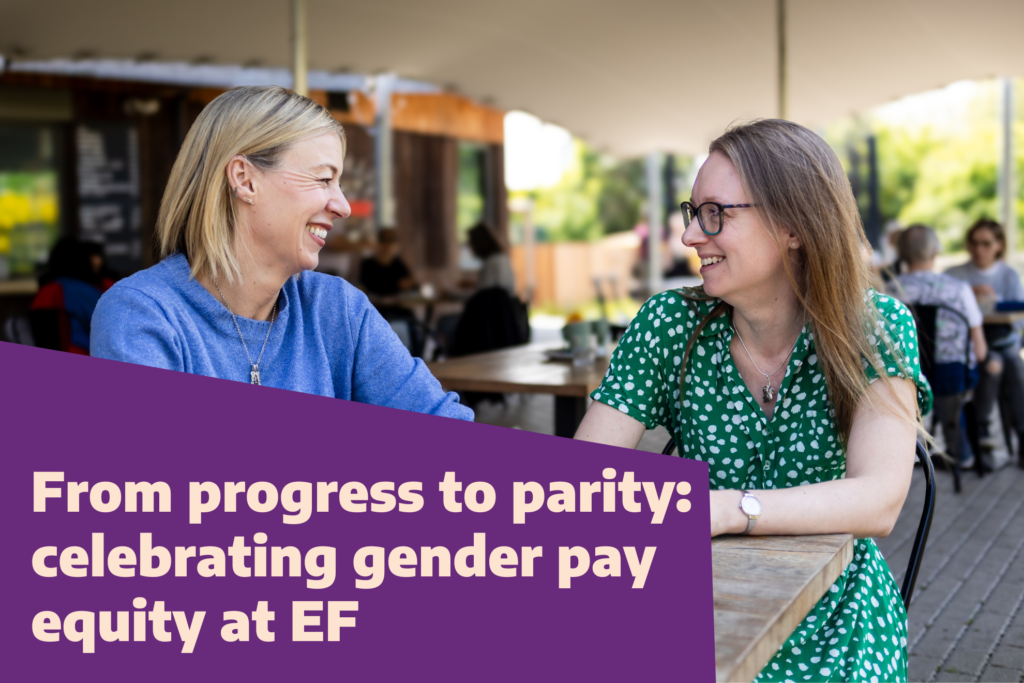A look at the numbers behind our 2025 gender pay gap report
Despite ongoing efforts, women continue to earn less than men on average and achieving pay equity remains a significant challenge. Historically, the highest-paying and most senior roles in the workplace have predominantly been held by men, contributing to a persistent gender pay gap.
A gender pay gap report provides a clear overview of the average earnings disparity between men and women within an organisation. A recent report by Civil Society which sampled data from almost 100 of the UK’s largest charities placed the gender pay gap at 6.3%, meaning that women earned on average 94p for every £1 that their male counterparts were paid.
2024 marked the first year that Emerging Futures was legally required to report on our gender pay gap, due to a growing workforce that exceeded 250 reportable staff members. The numbers were positive, with a small mean paygap of just 2.1%.
We made a pledge to improve on the benchmark set, and we’re pleased to share that our mean gender pay gap is now just 3p down from 31p last year. In 2025 there is no median pay gap at all, reduced from 1.6% in 2024!
The detail in the Emerging Futures gender pay gap numbers
In April 2025, Emerging Futures employed 233 reportable staff on which it was able to draw our gender pay gap data. Our colleagues were made up of:
107 (46%) – Male colleagues
126 (54%) – Female colleagues
Emerging Futures mean gender pay gap: 0.2%
The mean gender pay gap statistic represents the average difference in earnings between men and women.
Emerging Futures median gender pay gap: 0%
The median gender pay gap statistic measures the difference in pay between the middle-earning man and woman.
Emerging Futures pay quartiles
A gender pay quartile divides the workforce into four equal parts based on their pay rates, from the higher earners in quartile 1, to lower earners in quartile 4. These figures help us assess gender distribution across different pay grades within Emerging Futures.
We continue to see equal pay proportionally represented in each of the four quartiles, with 57% of the highest paid quartile identifying as female.
| Quartile 1 (upper earners) | Quartile 2 (upper middle earners) | Quartile 3 (lower middle earners) | Quartile 4 (lower earners) | |
| Male | 43% | 50% | 43% | 47% |
| Female | 57% | 50% | 57% | 53% |
Progress made. Commitment Continues
Whilst we can celebrate this achievement, we acknowledge that this is an ongoing journey and remain committed to equal pay for all.
While gender pay is one focus, we recognise there’s more to do on diversity and equality. As we shape our next 5-year strategy, we’re dedicated to making EF an inclusive workplace with equality embedded in all that we do.


